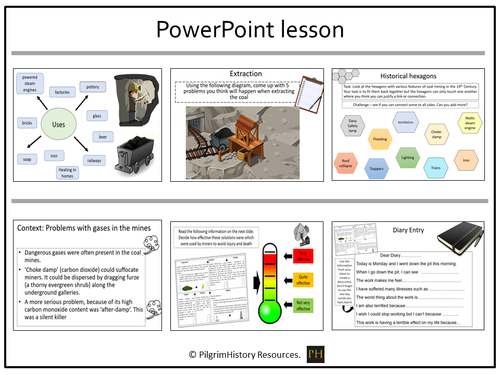


The Industrial Revolution
The aim of this aim is to assess why coal became known as ‘black gold’.
Students learn how important coal was to the Industrial Revolution and how it was used in a number of areas.
However the interesting facts focus on its extraction and yet again the dangers involved for all concerned, especially children.
Students have to rate how effective the various measures put in place were to overcome some of the problems
They also have to tackle some historical hexagonals to get them thinking and linking all the information together.
A find and fix plenary should test their recall and knowledge from the lesson.
The lesson is enquiry based with a key question using a lightbulb posed at the start of the lesson and revisited at the end to show the progress of learning.
The resource comes in PowerPoint format if there is a wish to adapt and change.
I have also included suggested teaching strategies to deliver the lesson and there are differentiated materials included.
Something went wrong, please try again later.
Excellent resources, well organised and explained. Thank you.
Report this resourceto let us know if it violates our terms and conditions.
Our customer service team will review your report and will be in touch.